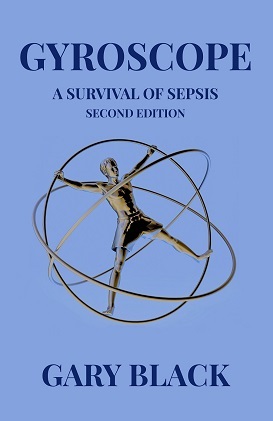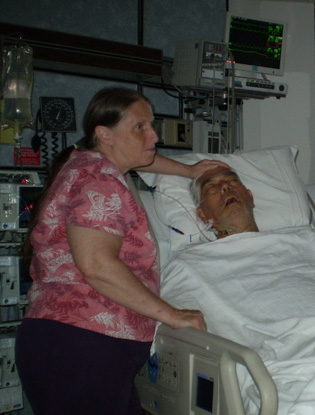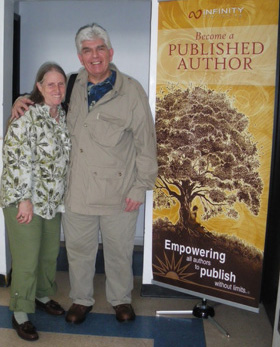My name is Gary Black, and I am a very fortunate survivor of severe sepsis. This website has been designed to increase awareness about sepsis. It showcases my recently published book: GYROSCOPE, A Survival of Sepsis, and discusses current investigations and research about sepsis.
GYROSCOPE reveals my entire harrowing experience of cascading to the edge of death from severe sepsis. It explores my mental, physical, and spiritual traumas and triumphs from onset to recovery. It also includes 52 illustrations that express my pain, anguish, dreams, delirium, and personal awakenings, a brief medical glossary, and research references.
I hope that this true story, written from a patient's perspective, will provide sepsis awareness to the public and health care professionals. I also hope that it will make a difference in your life.

I was born and raised in the Cleveland, Ohio area. I earned my M.Ed., B.S.Ed., and B.F.A. at Kent State University, and my A.A. at Cuyahoga Community College. I am an artist, musician, songwriter, art educator, and guitar instructor. I have produced, recorded, and performed my original music, and I am an accomplished artist in painting, drawing, sculpture and assemblage.My life changed dramatically on July 20th, 2009, when severe sepsis overcame me and brought me to the edge of death. Inspired by a miraculous recovery, I wrote my first book, GYROSCOPE. I now live in Raleigh, North Carolina. |

The second edition of my book is now available at Amazon.I can be reached at: gbmusart@yahoo.com |
1
 This picture was taken July, 2009 in the ICU at WakeMed Hospital. My condition quickly deteriorated. Severe sepsis was overwhelming me while I suffered acute renal failure, acute liver failure, severe pain, rapid breathing, and a fever sometimes peaking at 104.9 degrees. I also suffered extensive edema, jaundice, and was disoriented with delirium and multifactorial encephalopathy. I felt desperate as I felt myself moving toward the edge of death. The doctors told my wife Nancy (pictured) that if I did not improve in the next 24-48 hours, I would die.My despair was replaced with hope. After ten days in the ICU, I was blessed with a miracle, and I began to recover. A Divine presence could be felt in the ICU. God was bringing me back, and I began to feel inner peace. But, it was a long road to recovery. Month after month I struggled to overcome the impact of severe sepsis, until 15 months had passed. |
 This picture was taken in October, 2010 at a friend's cabin in the mountains of southern Vermont. I had time to really relax, and I felt much better. My wife and I had the time of our life immersed in the beautiful Fall colors, as we hiked along rocky rivers, explored covered bridges, and ate pancakes and Vermont maple syrup at a local restaurant. I renewed my spirit on this trip and felt energized to complete my book Gyroscope when I returned home.Contact Info:
|

On May 17th, 2011, my wife and I flew to Philadelphia to launch my new book Gyroscope at Infinity Publishing, located in West Conshohocken, about 20 miles from Philadelphia International Airport. The knowledgeable and professional staff at Infinity provided us with a very positive, author-friendly environment that helped make the book a success.
|

Here we are at the top of the "Rocky Steps" at the East entrance of the Philadelphia Museum of Art, mimicking Rocky's triumphant celebration. Making a trip up the steps became a symbol of perseverance, determination, and the successful completion of my book. At the top of the steps, we enjoyed breathtaking views of the city skyline. The Rocky statue, created by A. Thomas Schomberg, is an impressive bigger-than-life work of art. We also spent several hours enjoying the European Art collection from 1850-1900, especially the paintings by Renoir, Cezanne, Van Gogh, Pissarro and Monet.
|
 |
 |
 |
4 |





